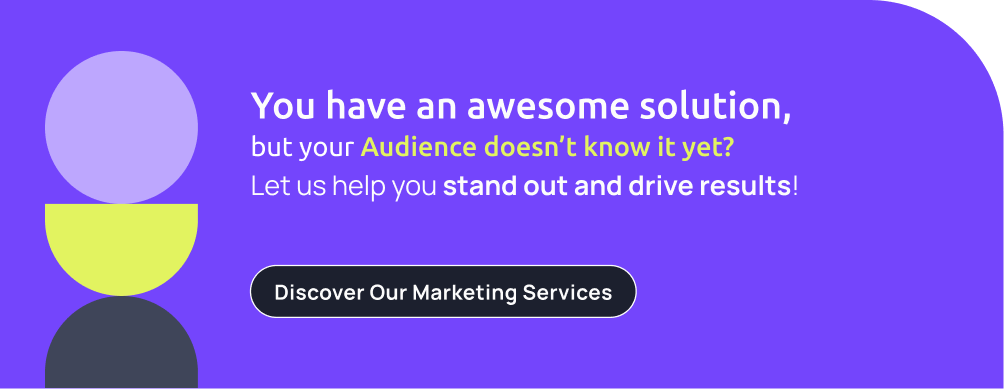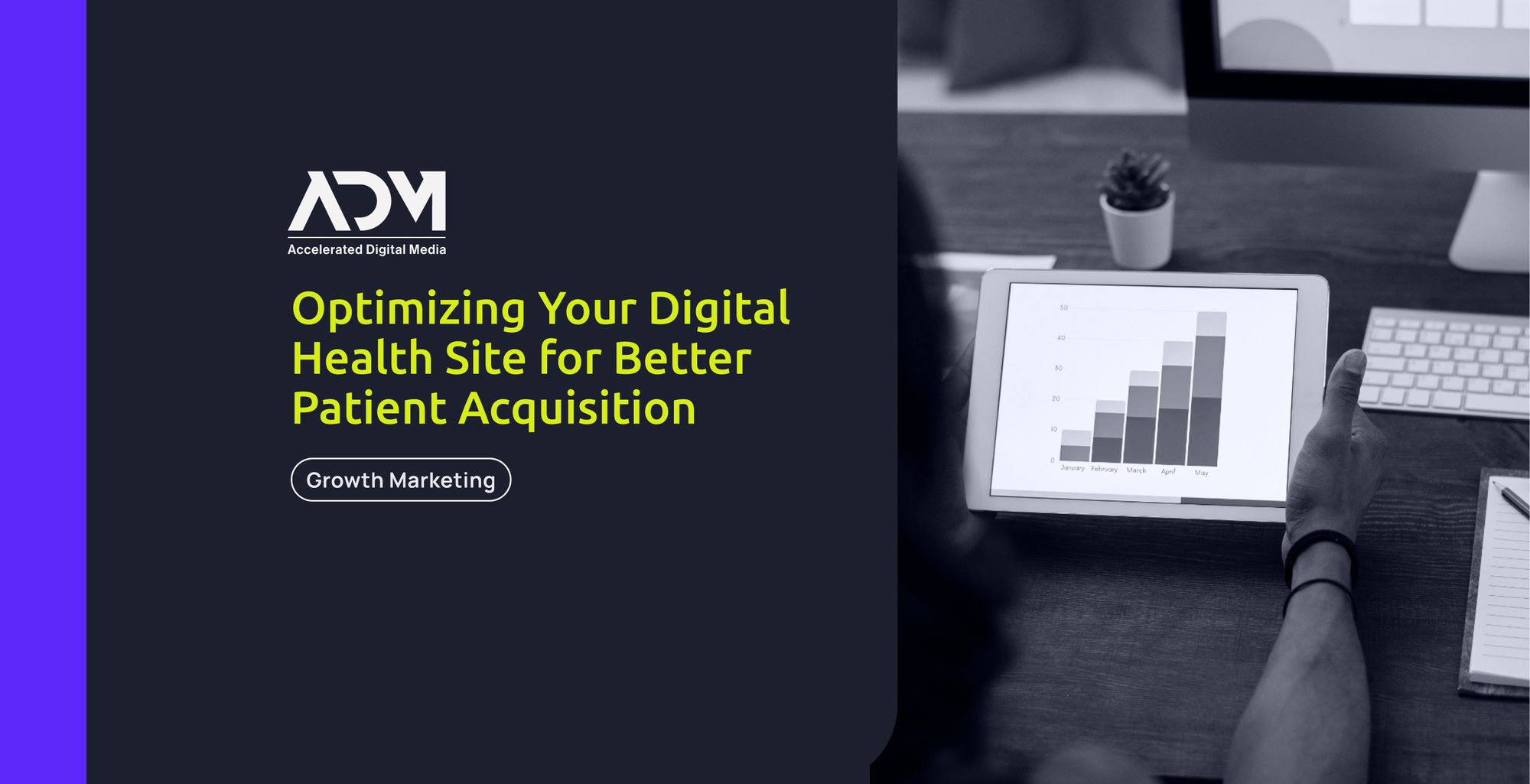Healthcare is a challenging field for digital marketing, and digital health products are an even more complicated proposition. Because your product is administered digitally, your digital marketing and user experience are part of the health service itself. How you reach potential patients, qualify their relevance, and allow them to navigate your offerings are all essential to your ability to administer care and grow as a company.

As a result, it's important to build your digital health products and advertising with usability and growth marketing in mind. Here's what to know.
The Intersection Between Marketing, User Experience, and Patient Acquisition
Your digital marketing strategy (when designed correctly) is a reflection of how your target market thinks and what they care about; it consists of knowing their actual pain points and addressing them correctly. Ultimately, user experiences provide direct insights into what will make those prospective patients choose your offering as their care solution.
Your digital acquisition tactics—like your SEM or paid social campaigns—can only go so far. Once users reach your website or app, you need to understand what experiences will encourage them to become patients and what missteps might cause them to go elsewhere for care.
For health brands, creating a cohesive journey from off-site search to on-site conversion is more complex than it would be for, say, a standard eCommerce site. These complexities come from the need to qualify prospective patients through their wide-ranging symptoms and treatment options, diverse needs, and more.
This situation calls for collaboration between marketing strategy and website/app design. The two most common areas of focus will be:
- Content updates and new landing pages to address your total market and the things that prospective patients are searching for and care about
- Reworking the intake flow to better qualify prospective patients in ways that encourage conversion
Creating Landing Pages That Meet Patient Needs
Your landing page strategy must center around the full scope of your potential patients’ needs. This ranges from establishing where they are in their treatment journey, the treatment options relevant to them, payment methods they can use, and more. Some users may not know exactly what they have or how to treat it, while others may already know the exact treatment they are seeking and how they’ll pay for it (cash vs. insurance).
The main landing page issues we encounter are:
- Lack of specificity (in situations where a health company is addressing diverse sub-conditions)
- Lack of transparent pricing information
- Missing information on key decision points, like payment methods (what types of insurance are accepted, etc.)
To address this, diversity in page style is needed. For specific sub-conditions and treatment questions, build unique landing pages for campaigns that narrowly focus on those subjects in order to meet specific patient needs. For users searching for payment methods, having custom pages for cash or insurance is very helpful—also, if there are payment assistance programs that are useful for a specific treatment of conditions.
Addressing these issues thoroughly on your landing pages is key both for getting users to your page and ensuring that they feel they are in the right place once there.
Specific Landing Page Strategy Enables Better SEM Campaigns
Good keywording and page diversity can help draw organic traffic. But specific keywording will also ensure any SEM ads you are directing towards that page won’t be hindered by low quality scores, which can occur when the language in your ad copy doesn’t align well with the landing page or the keywords you are bidding on.
When pairing your onsite strategy with SEM campaigns, clear and frequent mention of the specific conditions or treatments on the landing page will play a big role in whether users make it to your site—even if you’re bidding on the right keywords.
Even if a user needs to be qualified by a provider, or the provider may determine that an alternative treatment would be a better option than the page that the user landed on, having these pages as the entry point is critical to drawing those patients. With the right landing page infrastructure in place, you’ll be able to build focused SEM campaigns to fill business needs, like emphasizing a new health service offering or growing your patient base for a specific underserved condition.
No one knows your brand’s care offerings better than you do, so it’s important to monitor what keywords are bringing users onto each page and determine if you are providing appropriate keyword coverage for the full range of services you provide. If you identify gaps, it’s vital to build landing pages that will provide the information and keyword relevance you’re currently missing.
Designing the Right Intake Flow
Getting potential patients onto a relevant page is half the battle. The user now feels comfortable that they are in the right place, but the health provider has to determine that they’re right for treatment. When designing the medical questionnaire you will use to qualify potential patients, there are a wide range of considerations.
Before you can ask users anything, there are a number of questions you will need to answer for yourself in order to build a good intake flow. The answers to these questions are not one-size-fits-all. In most cases, they are unique to the company and each particular product.
How long should the medical questionnaire be? It’s absolutely critical to ensure the user is 1. Eligible for the available treatments, and 2. The provider has the information to make an appropriate determination. The length of your questionnaire will largely depend on the complexity of the condition being treated, health safety, and how much information you’ll need to collect before and after checkout.
Should the medical questionnaire come before the checkout or after? Branching off the last point above, it’s important to consider how your services work and determine what questions need to be asked before and after checkout. For instance, a teletherapy provider could choose between an intake flow where a user signs up for mental health services first but selects their specific provider after subscribing. Accelerated Digital Media clients have seen success both ways, but this determination hinges on the experience and the type of services the health company is providing.
Other structural decisions will depend largely on the nature of the information you need to collect to determine if a patient is a good fit. These include whether your questionnaire will offer drop-downs, text fill, or multiple choice responses; whether users will have the chance to add supplemental reasoning for these questions; whether some tasks (like uploading IDs and linking insurance) will come before or after signup; and more.
Applying CRO Tactics to User Intake
Once you know what you’ll ask and how you’ll ask it, you need to consider design elements that will have an impact on user experience to ensure that relevant users reliably convert into patients. There are a number of ways to improve conversion rates within your questionnaires. If you’re noticing a significant dropoff before the conversion point, consider:
- Starting with a better opening question that appeals to a user’s sense of need. Rather than starting with generic demographic data, give them a multiple choice question that asks what they are looking to accomplish from your health services.
- Finding ways to remove unnecessary steps and questions to keep the process shorter.
- Visually demonstrating the user’s progress as they move through the questionnaire to encourage them to continue.
- Allow users to skip time-consuming steps that can be completed following signup—like allowing them to upload their insurance card later, so long as they are informed that they will still need to complete that process to pay for some services.
Optimizing the interactive elements of your digital health product is a science, and these are just some of the steps you can take to help draw prospective patients further into the process. For even more detail on the subject, Accelerated Digital Media has written a handy 21-tip eBook on conversion rate optimization for digital health.
Aligning Your Digital Health Product with Growth
The intersection of healthcare and digital marketing presents unique challenges that require careful navigation. In the field of digital health, marketing and user experience are not just add-ons but integral components of the health service itself. Health brands must not only ensure that users are directed to the right place but also strive to make their offerings relevant and beneficial to individual needs. Building digital health products with usability and growth marketing in mind is crucial for success.
By considering these factors, companies can ensure that their marketing spend has a better chance to work efficiently and that patients will spend less time and thrive in this complex and competitive industry. With the right strategies and thoughtful execution, healthcare providers can embrace the opportunities that digital marketing brings and deliver exceptional value to their patients.
To build a better patient acquisition funnel, it can be useful to work with an agency that specializes in health marketing. If you’re seeking industry expertise and growth-oriented strategies, don’t hesitate to reach out to the team at Accelerated Digital Media.

